Search Results for Tag: Mount Everest
Barely no chance to escape
The quite inconceivable really happened. A huge avalanche from Pumori, triggered by yesterday’s earthquake in Nepal, hit the Base Camp at the foot of Mount Everest at full force. The seven-thousander is located just opposite the highest mountain in the world. But hardly anyone had expected that an avalanche from Pumori would reach the edge of the Khumbu Icefall. “I ran and it just flattened me. I tried to get up and it flattened me again. I couldn’t breathe, I thought I was dead,” said George Foulsham, a mountaineer who lives in Singapore. The 38-year-old marine biologist was lucky and survived. It is not yet totally clear how many climbers lost their lives in Base Camp.
![]() read more
read more
Baumann: “Families of Everest victims still need help”
There was no climbing on Mount Everest on this Saturday. At the Base Camp at 5,300 meters, more than 300 western climbers and an equivalent number of Sherpas commemorated the 16 Nepalis who had been killed in the avalanche in Khumbu Icefall exactly one year ago. It was the worst avalanche disaster in the history of Everest. The German climber and physician Matthias Baumann had witnessed the tragedy at the Base Camp. Later he visited the families of the victims and launched a relief campaign for them. In March, the 43-year-old trauma surgeon from the city of Tuebingen traveled again to Nepal. He distributed money to the families of the victims and launched financial sponsorships to guarantee the education of the avalanche victims’ children.
Matthias, a year ago, you were at the Base Camp of Mount Everest, when the avalanche released in the Khumbu Icefall. You were among the doctors who first treated the injured climbers. Are you still thinking of what happened on 18 April 2014?
![]() read more
read more
Bonington: “The joy of climbing in the Himalayas is exploration”
He was knighted to Sir Chris Bonington but he kept his feet on the ground. The 80-year-old Briton, a true living legend in mountaineering, is still a friendly man who is always speaking frankly. I was able to verify this at first hand when I met him last week in Chamonix where he was awarded the Piolet d’Or for his life achievements in the mountains.
Chris, what does the “Career Piolet d’Or” mean to you?
It means a huge amount, because this is an award for my peer group. And in it I’m joining some of the finest and best climbers in the world [Walter Bonatti (awarded in 2010), Reinhold Messner (2011), Doug Scott (2011), Robert Paragot (2012), KurtDiemberger (2013), John Roskelley (2014)], many of whom of course are good friends as well. So it means as much as any award I ever had.
You are 80 years old and you are still climbing, most recently in Catalonia in Spain some weeks ago. Please tell me your secret?
![]() read more
read more
Rather far on the right side
Apparently, the new route through the Khumbu Icefall is more than a little course correction. That is indicated by the images that the US guide Garrett Madison has published in his blog. Expedition members of his Madison Mountaineering team had flown over the icefall above Everest Base Camp by helicopter and had looked from the air where the so-called “Icefall Doctors” set up the route for this spring season. The images show that the route leads – seen from below – much further to the right side of the ice labyrinth than expected. Closer to Nuptse, further away from the West Shoulder of Everest, from where an ice avalanche had released on 18 April 2014 that had killed 16 Nepalis. “It appears that climbers will have to negotiate broken ice as before, and perhaps more vertical ladders”, Garrett wrote adding that there was at least one section that had four vertical ladders tied together to ascend up a very large ice cliff.
![]() read more
read more
Jamling Tenzing Norgay: “My father would be shocked”
I owe Jamling Tenzing Norgay my first experiences in the Himalayas. I met the son of the first man who made it to the top of Everest in 2001 when he presented his book “Touching My Father’s Soul” in Germany. In 1996, Jamling had followed in his father’s footsteps by reaching himself the summit of the highest mountain on earth. Norgay’s book was the first to discuss from the Sherpas’ point of view the May 1996 disaster on Everest, in which twelve climbers had died, most of them clients of commercial expeditions. At the end of our meeting in Munich, Jamling said: “If you want to come to Nepal someday, contact me! Then I’ll help you to organize the trip.” He kept his word. In 2002, the International Year of the Mountains, I trekked to the base camp on the Nepalese side of Everest. Today Jamling Tenzing Norgay is a sought-after speaker. I asked the 48-year-old what he expects of this year’s climbing on Mount Everest.
![]() read more
read more
Goettler and Co. plan new Everest route variant
This year, the Tibetan north side of Mount Everest works like a magnet to German professional climbers. David Goettler has announced that he also wants to climb the highest mountain in the world from the north this spring, along with his German friend Daniel Bartsch and the Canadian Raphael Slawinski. “If everything runs perfectly, we want to try a variant or a new route. Others have to decide how it is called at the end”, the 36-year-old tells me on the phone. The planned ascent route runs near the normal route, first on the left, later crossing it between Camp 2 (7500 meters) and 3 (8300 meters), leading to the “Great Couloir” (also called Norton Couloir). “This would allow us to avoid possible traffic jams at the rocky steps on the normal route”, says David. The trio wants to climb without Sherpa support and without bottled oxygen.
![]() read more
read more
Brice: “Detrimental to Nepalese tourism”
The decision of the Nepalese Government to extend last year’s Everest permits until 2019 came late, very late. “The Everest season starts in a few days, my staff are already on their way to Base Camp, so our planning has been going on for months”, Russell Brice, head of the New Zealand expedition operator Himalayan Experience, writes to me. “Food, oxygen and equipment are already in the Khumbu and members will be arriving in Kathmandu as from Monday next week.” He has some members that were at Everest last year coming back this year, says Russ. There is no sign of euphoria in his words about the decision to prolong the permits.
![]() read more
read more
Everest permits extended
This decision was really overdue. The Nepalese government finally decided that the permits to climb Mount Everest in 2014 remain valid until 2019. Shortly after the avalanche in the Khumbu Icefall on 18 April 2014 that had killed 16 Nepalese climbers, the spring season de facto had been terminated. More than 330 foreign climbers left the highest mountain in the world, without having set foot on it. Even then government officials in Kathmandu announced that the permits for the 39 expedition groups would retain their validity for five years. However, the words were not followed by deeds. Instead, there were rumors about government plans to extend the permits only for groups. The climbing scene was outraged rightly. If in this case e.g. only one climber would have used the permit of 2014 to climb Everest in 2015, the other group members not in attendance would have been empty handed. Now, this regulation is apparently off the table.
![]() read more
read more
As a pair, but not in cosy togetherness
This will be an illustrious group of mountaineers. In April, not only expedition leader Dominik Mueller and his clients but two German record holders will gather in the base camp of the German operator Amical alpin on the Tibetan north side of Mount Everest. Firstly, the most successful mountaineer of the country, Ralf Dujmovits. The 53-year-old has already reached as so far only German climber the summits of all 14 eight-thousanders. On the other hand Alix von Melle, who scaled six eight-thousanders and thus leads the ranking of the most successful German women on the highest mountains in the world. Both want to climb without bottled oxygen, but they’ll do in separate teams: Ralf with the Canadian Nancy Hansen, Alix with her husband Luis Stitzinger. Van Melle says she has closed the chapter of the abrupt end of their Makalu expedition in May 2014. “This is over and mentally processed. I feel quite well again”, the 43-year-old told me.
![]() read more
read more
Dominik Mueller: “Concentrated competence at base camp”
The Everest climbers are in the starting blocks. In four weeks, the majority of them will travel to Nepal or Tibet. The final decision of the Nepalese government, whether and, if so, how exactly the permits of the prematurely terminated spring season 2014 are valid for 2015, is still to be made. Dominik Mueller, head of the German operator Amical alpin, doesn’t have to worry about that. The 43-year-old leads an expedition to the Tibetan north side of Everest. His team will include not only “normal” clients but also three top-class mountaineering professionals from Germany. Ralf Dujmovits, so far the only German who climbed all eight-thousanders, wants to scale Everest without bottled oxygen – together with the Canadian Nancy Hansen. Alix von Melle and Luis Stitzinger plan to do the same. The German couple has so far climbed six eight-thousanders. Dominik Müller worked as an expedition leader on six of the 14 highest mountains. He reached the summit of Cho Oyo twice. “During the other expeditions, I had to put aside my personal interests being the leader”, Dominik told me. This time on Everest this could be different.
![]() read more
read more
Everest shitstorm
“The Lord of the smells“ – this was the title of a story I wrote more than 20 years ago for a German magazine dedicated to parents. At that time my wife and I were swaddling three children several times daily. Once the garbage men threatened to ignore our trash can packed with diapers, not only because it stank, but also because it was so heavy. One day, under the impression of having disposed again several portions of human waste, I wrote said article about the suffering of a swaddling father. It was never published. “Funny, but a little bit to stinky”, the chief editor of the magazine replied. Meanwhile, the public seems to be not as squeamish as in former times: A statement of Ang Tshering Sherpa, president of the Nepal Mountaineering Association, about the problem of human waste in the high camps on Mount Everest led to a true “shitstorm” on the Internet.
![]() read more
read more
Dawa Gyaljen Sherpa: “Cold war inside”
He was one of the first at the scene. After the fatal avalanche at the Khumbu Icefall on 18 April 2014, Dawa Gyaljen Sherpa rushed down from Camp 2 to help the buried climbers. “On the spot, we encounter dead bodies and blood everywhere. There were a row of dead bodies in one main rope swept into the crevasse”, the 28-year-old Sherpa wrote to me in 2014. “When we pulled the rope, we found the body one after another in the same crevasse. Some of the dead bodies were buried into the snow and we could see only the boots, it seemed those bodies were upside down.” 16 Nepalese were killed in the avalanche, two weeks later the Base Camp was empty, the season finished. Dawa Gyaljen Sherpa has summited Everest four times, he did it for the first time when he was 19 years old. Later Dawa studied in UK. Now he’s living in Kathmandu. I asked him what he thinks about the upcoming Everest spring season. He replied openly. A Sherpa point of view, an interesting insight.
![]() read more
read more
Russell Brice: “At last”
Russell Brice breathes out. “At last”, the 62-year-old New Zealander, head of the expedition operator Himalayan Experience, replies to my question on what he thinks about the planned new route through the Khumbu Icefall on Mount Everest. “We have been asking the SPCC (Note: The Sagarmatha Pollution Control Comitee is responsible for the route through the icefall.) to put the route more central since 2012. Now at last they have listened to the foreign operators instead of the local Sherpas who asked for the route to be moved so as they could travel faster … but not so safely.” Brice doesn’t expect that the new route will take the clients as much time as SPCC president Ang Dorjee Sherpa estimates: “It will take only about one hour longer, not three to four hours. You see there are not many people around these days who have been this way. But I have.”
![]() read more
read more
Discussions about new Everest route
No matter how likely something seems to be, things may turn out quite differently. For many years, most climbers on the Nepalese side of Everest thought that the route through the Khumbu Icefall, which led – seen from below – along the left hand side directly below the West Shoulder, was safe. Until 18 April 2014 when a huge ice avalanche released and killed 16 Nepalis. The Sherpas revolted, the season was over before it had begun. This spring, the route is to be relocated further away from the West Shoulder, about 40 meters to the centre of the Icefall. Ang Dorjee Sherpa, president of the Sagarmatha Pollution Control Commitee (SPCC), which is responsible for the route, said to the Himalayan Times, he expected that the clients need three to four hours more to reach Camp 1. Although the new route is not as risky as the old one, it is more difficult, says Ang Dorjee. Not all are convinced that this is the last word.
![]() read more
read more
Kaltenbrunner: “All Everest parties around one table!”
It has become quieter around Gerlinde Kaltenbrunner. A fact that she actually likes. The 44-year-old Austrian is still a sought-after speaker. So Gerlinde can not complain about a lack of work. But she has enough time to travel around. Without any pressure – that disappeared after she had successfully completed her big project by climbing K 2 in 2011: She was the first and so far only woman in the world who climbed all 14 eight-thousanders without bottled oxygen. Our paths crossed on Mount Everest in 2005, when she tried (in vain) with Ralf Dujmovits and Hirotaka Takeuchi to climb the North Face and I reported about it. In 2010, she reached the summit via the Tibetan normal route. I met Gerlinde at the trade fair ISPO in Munich a week ago and we talked about Everest.
Gerlinde, you climbed Mount Everest as well as the other 13 eight-thousanders without supplemental oxygen. At the moment there are a lot of discussions about what happens on the highest of all mountains, especially because of the avalanche disaster and the subsequent end of all expeditions on the Nepalese side in spring 2014. The Sherpas revolted. Did this conflict boil up and over?
![]() read more
read more



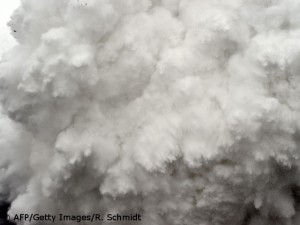

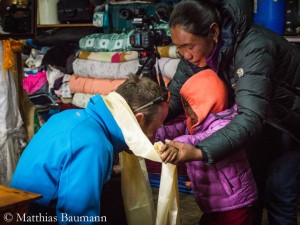

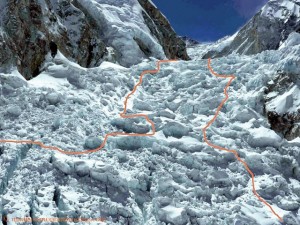
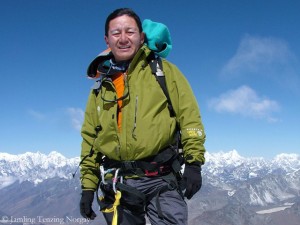
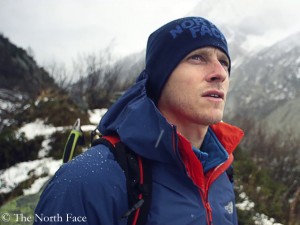
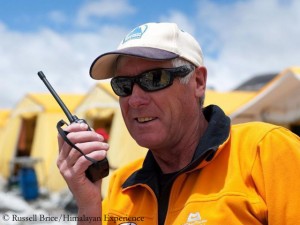
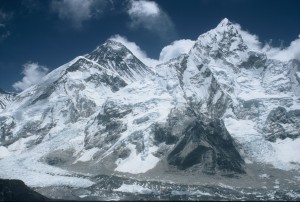
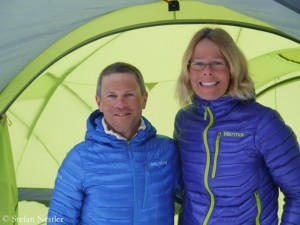
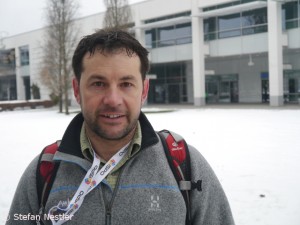
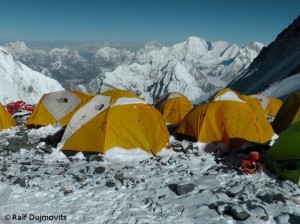

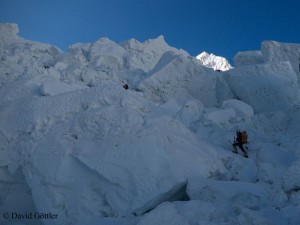
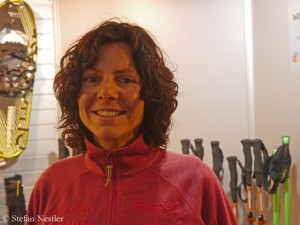





Feedback